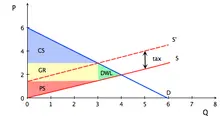Economics Terms A-Z
Rival Goods
Read a summary or generate practice questions using the INOMICS AI tool
In the modern economy, consumers exchange money to acquire goods and services that increase their utility. There are many different kinds of goods and services, and many ways that economists can classify them. For example, price elasticity of demand and income elasticity of demand can tell economists whether goods should be considered normal, luxury, Veblen, inferior, or Giffen goods.
But elasticity is not the only way economists classify goods. Another important characteristic to consider is how consumption of a good affects its ability to be consumed by others. Specifically, if consuming a good reduces the ability of other people to consume it – or if a good cannot be enjoyed by more than one person at a time – it’s called a rival good. Economists might also say that this good exhibits “rivalry in consumption”.
Rival goods include many everyday items, like drinks and food. As someone drinks their beer, there is less of that beer for someone else to consume. Similarly, if your friend eats a cookie at a party, you cannot enjoy that cookie – it’s gone.
Clothing items are also rival. Even though you could lend your favorite scarf to a friend, when you’re wearing the scarf, nobody else can. Therefore scarves (and most other clothing items) are considered rival goods.
Other examples of rival goods include tickets to a concert, seats in a restaurant, and booking air travel. When you purchase or reserve one of these goods, you consume a spot that another person cannot claim.
It might seem like every good is rival - after all, if you buy something, it’s yours. But there are many goods and services that don’t follow this pattern.
Consider a streaming service. When you pay for a subscription to a streaming service, you’re able to consume as many movies or TV shows from that service as you want. But no matter how much you watch, it will not diminish the amount of movies left for other people to enjoy. Goods like this that lack rival characteristics are simply known as non-rival goods.
Other examples of non-rival goods include a fireworks display, music albums, and national defense. In each of these cases, enjoying the good or service provided does not diminish the amount available for others to enjoy as well, nor does it prevent another person from enjoying the good at the same time.
Good to Know
This rival or non-rival characteristic of goods may seem similar to the concept of externalities, but they’re not the same. For example, it might be argued that a negative externality is produced when someone consumes a cup of coffee, leaving less coffee for others. But this logic is flawed.
Someone enjoying their cup of coffee does not produce a negative externality (such as loud noise, pollution, etc.) for others. While the cup of coffee is rival – once consumed by its buyer, it cannot be enjoyed by anyone else – it does not actually affect others outside of this interaction. Consider an individual wandering by who isn’t involved in the market for coffee; the coffee lover finishing their cup doesn’t harm or benefit this individual in any way.
Further, recall that the definition of an externality is a benefit or cost that is not factored into the market price. When private goods (like coffee) that do not otherwise create externalities are sold to an individual consumer, the market price already reflects the cost of production and overall demand from every individual participating in the market.
Barring situations like monopoly, price ceilings, or other deadweight loss-causing market interventions, the perfectly competitive market price will nudge individuals to consume the socially optimal amount of coffee. This means that an externality is not present.
Further Reading
Just as goods can be rival or non-rival, goods can also be excludable or non-excludable. While these may sound like similar terms, they measure different things. Together, rivalry and excludability define four different types of goods. These are private goods, public goods, club goods, and common goods.
See the article on excludable and non-excludable goods for more information about this characteristic.
-
- Postdoc Job
- Posted 2 weeks ago
Postdoctoral Researcher in Financial Economics (f/m/x, 100%)
At Halle Institute for Economic Research (IWH) - Member of the Leibniz Association in Halle (Saale), Germany
-
- Master's Program
- Posted 1 week ago
MSc/PhD in Economics (IDEA) - Barcelona
Starts 1 Sep at Universitat Autònoma de Barcelona in Barcelona, Spain
-
- Summer School
- Posted 1 week ago
Oxford University Economics Summer School
Starts 7 Sep at Department of Economics, University of Oxford in Oxford, United Kingdom












